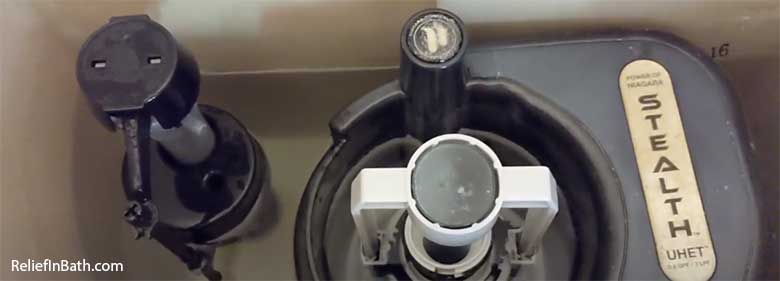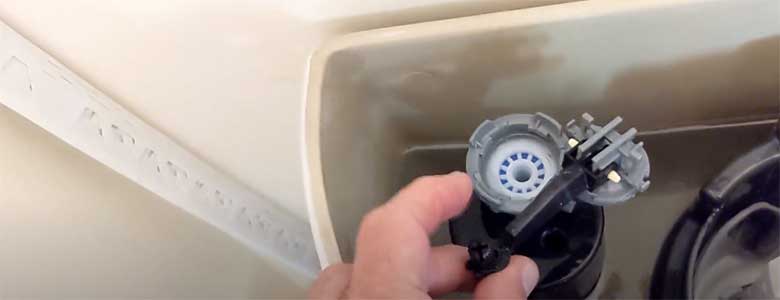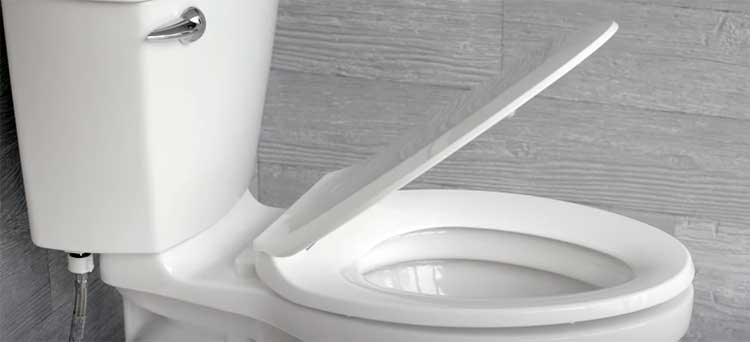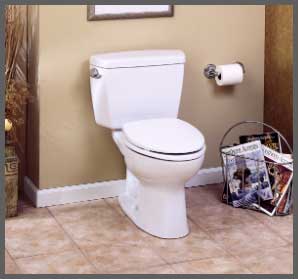If you’ve bought or considered a Niagara Stealth toilet, you’re probably intrigued by its ultra‑low flush water savings.
In this review, I’ll share my firsthand experience dealing with flushing issues, adjustments, and occasional leaks.
You’ll discover whether the Stealth lives up to its promise—or if the potential headaches make it a gamble for your bathroom.
Comparison Table: Niagara Stealth Vs. Standard Toilets
| Feature | Niagara Stealth | Standard Toilet |
| Flush Volume | Ultra-low 0.8 & 1.1 gpf | 1.28–1.6 gpf |
| Flush Power | Lower pressure, may stall | Usually stronger, more volume |
| Quiet Operation | Whisper-quiet due to Stealth design | Moderate sound level |
| Clog Resistance | Prone to clogging without frequent cleaning | Better at self-clearing |
| Tank Fill Component Quality | Plastic fill valves and flappers | Often more robust components |
| Installation Complexity | Similar installation but less forgiving | Easier to adjust flush volume |
| Cost | Moderate to high for specialty model | Wide range, including budget options |
| Water Savings | Superior—significant conservation | Standard or WaterSense models |
| Recurring Issues | Fill valve failures, weak flush | Typical wear and tear, occasional leaks |
My Experience with the Niagara Stealth Toilet

I installed a Niagara Stealth in my master bath to reduce water bills. The idea sounded brilliant—less than a gallon per flush, whisper‑quiet, and WaterSense certified. It looked sleek with a compact tank and minimalist design.
At first, I appreciated how silent it was—even the refill cycle was more discreet than older models.
But after a week, I noticed residual waste in the bowl—especially during low‑volume flush (0.8 gpf).
I had to upgrade to the 1.1 gpf flush pin to avoid double flushing. Even then, occasionally heavier loads didn’t clear completely, requiring a second or manual flush.
Within a few months, I encountered a running tank issue. The fill valve kept dripping a little until I lifted the flush pin slightly higher.
After adjusting, the leak stopped. But then, the flapper seal started deteriorating sooner than I expected—likely due to the unusual mechanism design.
Cleaning was different too. I found mineral buildup inside the bowl rim slowed water flow over time.
A quick vinegar soak helped—but reminded me how sensitive the flush design can be if it gets partially clogged or blocked.
Over six months, I grew to respect the water savings, but began to doubt its long-term reliability.
It felt less forgiving than regular toilets. For occasional use or for people sticking to perfect care routines, it works well.
For busy households or older users who may forget maintenance, the frustration may outweigh the smart savings.
Pros and Cons of the Niagara Stealth Toilet

Pros:
- Step 1: Excellent Water Savings: Niagara Stealth toilets use just 0.8 or 1.1 gallons per flush. You save water—potentially thousands of gallons a year—especially with bi‑level flush.
- Step 2: Ultra-Quiet Operation: Flushes and fill cycles are whisper-quiet thanks to the sound-insulated well and slow‑filling tank design.
- Step 3: Compact Design: The tank is smaller and sleeker, making it ideal for tight shelves or behind cabinets.
- Step 4: Certified Dual Flush Options: You can choose full or partial flush easily via internal lever, giving flexibility.
- Step 5: Simple Construction: Fewer moving parts and minimal internal components make the initial installation straightforward.
- Step 6: Eco-Friendly Reputation: The Stealth is WaterSense certified, which helps if you’re trying to qualify for rebates or green home features.
Cons:
- Step 1: Frequent Clogging with Larger Loads: Because flush volume is low, dense waste or thick paper may not clear in a single flush.
- Step 2: Sensitive to Bowl Debris: Buildup on the rim or jets can reduce pressure further—making clogs more likely unless cleaned regularly.
- Step 3: Less Forgiving Tank Mechanism: The plastic-style fill valve and flush pin can wear more quickly than traditional flappers and floats.
- Step 4: Running Tank Issues: In some units, the flow adjustment screw loosens easily, causing continuous drains until re-adjusted.
- Step 5: Shorter Warranty Tolerance: Niagara’s standard warranty is shorter than that of major brands, and replacement parts may be limited.
- Step 6: Harder to Repair: Many components like the fill assembly are custom and pricier to replace. That matters if you need long-term fixes.
- Step 7: Not Ideal for Heavy Use Homes: In households with frequent use or less careful routine, the Stealth requires more maintenance and care than sturdier designs.
Maintenance & Troubleshooting Tips

If you’re using a Niagara Stealth toilet, here’s how to get the best performance and avoid problems:
Clean rim jets and bowl vents monthly with a vinegar soak or CLR to maintain flush pressure.
Adjust the dual-flush lever as soon as you notice slow refill or drip—small tweaks restore performance quickly.
Inspect the fill valve seal and flow screw if tank runs overnight—tighten the screw or replace seal if persistent.
If light loads don’t clear, upgrade from 0.8 to 1.1 GPF flush pin (models permit this swap easily).
Avoid flushing thick paper or multiple sheets at once—discourage kids from doing so.
Use a soft brush to clean inside the trapway periodically—use vinegar flush and avoid harsh chemicals.
Check the tank’s fill height if you hear hissing or phantom flushes—correct fill line is essential.
Replace flush pin annually if you feel sluggish response or sticky movement.
Ensure water pressure supply is stable—low municipal pressure (< 40 psi) may impair flush strength.
Record model and serial in case of warranty claims—Niagara customer service is limited after 1–2 years.
Niagara Stealth Vs. Comparisons
- Niagara Stealth Vs. American Standard Champion

When I compared my Niagara Stealth toilet to the American Standard Champion, the most obvious difference was power.
The Champion features a powerful 4-inch flush valve and a 2 3/8-inch trapway, which gives it more force to move waste with fewer chances of clogging.
It’s designed to handle larger loads effortlessly, making it a go-to for families or high-use bathrooms.
The Stealth, in contrast, is laser-focused on water efficiency. It uses as little as 0.8 GPF, which saves a tremendous amount of water over time.
But that comes with a trade-off. In my experience, you might need to flush twice for larger waste or tissue. This rarely happens with the Champion.
Another key difference is cleaning. The Champion’s EverClean surface resists staining and keeps the bowl cleaner longer.
The Stealth can stain more quickly because of its ultra-low flush volume, and I found myself cleaning it more often.
So, while the Champion might use more water, it makes up for it with flushing reliability and less maintenance.
If you want eco-friendly and low noise, the Stealth wins. But if you value consistent power and fewer double-flushes, the Champion is more practical.
- Niagara Stealth Vs. Toto Drake

Toto Drake is one of those toilets that I’ve seen repeatedly recommended for its build quality and reliable flush.
The version I tested uses 1.28 gallons per flush, which balances power and conservation nicely.
It has the Tornado Flush system, which spins water around the bowl with force, making cleaning more efficient and reducing the need for frequent scrubbing.
The Stealth’s vacuum-assisted flush is much quieter than Drake’s but not as forceful. In my experience, the Drake clears everything in one go almost every time. The Stealth occasionally struggles, especially with bulkier waste or multiple flushes back-to-back.
The Toto Drake also has a higher-quality feel. The ceramic finish, the sturdy lever, and the slow-close seat just feel more refined. Plus, its universal height is a better fit for taller users or older adults.
Niagara Stealth is still great if you want to minimize water usage to the extreme, but Toto Drake gives you more comfort, power, and long-term durability.
- Niagara Stealth Vs. Kohler Highline
Kohler Highline is another trusted toilet I’ve used, and it’s all about dependable performance and comfort.
The Highline typically uses 1.28 gallons per flush—still water-efficient, though not quite at Stealth’s level.
What impressed me about the Highline was its taller “comfort height” bowl and Class Five flush technology.
It doesn’t clog easily, and you can tell it’s made to handle heavy use. I never needed to double flush, which was a refreshing change compared to the Stealth.
Noise-wise, the Highline is a bit louder, especially during the tank refill. But in exchange, I got more peace of mind when guests used the bathroom—no worrying about incomplete flushes or overflows.
Kohler’s longer warranty and more widely available replacement parts also gave it an edge. If you live in a busy household, the Highline may be a better all-rounder.
- Niagara Stealth Vs. Glacier Bay Power Flush
Glacier Bay’s Power Flush toilets surprised me with their aggressive flushing system. Instead of relying on gravity or vacuum-assist like Stealth, these toilets use pressure-assisted mechanisms to deliver a loud, commanding flush.
While that makes them very effective at clearing the bowl in one flush, it also means more noise and slightly higher water usage—usually around 1.1 to 1.6 GPF. In side-by-side tests, the Glacier Bay cleared waste faster and more thoroughly than the Stealth.
Installation was a bit trickier on the Glacier Bay, and I noticed the build quality didn’t feel as refined.
Some parts looked cheaper, and reviews often mention early wear. However, in terms of raw power, it beats the Stealth hands down.
You’ll need to decide what matters more—water conservation and silence, or power and reliability.
For me, Glacier Bay was better in guest bathrooms, but I stuck with Stealth in my ensuite where water savings matter more.
- Niagara Stealth Vs. Gerber Viper
The Gerber Viper is a strong competitor that flies under the radar. It’s engineered with a larger trapway and more forceful flush than the Stealth.
I found that it rarely, if ever, needed a second flush—even when challenged.
That said, the Viper uses 1.28 gallons per flush. It’s not wasteful, but it’s not quite in Stealth territory either.
If your priority is ultra-low water use, the Stealth still wins. But for consistent flush power and less user involvement, the Viper makes a strong case.
It’s also easier to maintain. Parts are standard, easily sourced, and more affordable than the Stealth’s proprietary components.
You’ll spend less time troubleshooting and more time trusting the Viper to do its job.
Still, the Viper is louder than the Stealth and lacks some of the sleek, compact design that Niagara’s model brings.
For utility bathrooms, rentals, or places where performance matters more than aesthetics, the Viper might be the smarter long-term choice.
Frequently Asked Questions (FAQs)
They’re excellent for water savings and quiet operation—but they are sensitive to maintenance and less tolerant of heavy or thick waste.
Fill valves (especially seals) and flappers or flush pins are the most common failure points—Niagara’s design uses a plastic pin and seal that can degrade faster.
Often the flow-adjustment screw or seal inside the fill valve is misaligned or not seals properly—tightening the screw or replacing the seal usually stops the run.
Common toilet issues include running tanks, clogs, leaks at base or flapper seal, weak flushes, and noisy fills—these occur in many models, but Stealth’s ultra‑low flush pressure makes them more likely without proper upkeep.
Final Thoughts
If you prioritize minimal water use and whisper-quiet flushes, and are willing to clean the bowl more regularly, the Niagara Stealth toilet can be a smart, water-saving tool.
But if you want ease of use, strong flush power, and low-maintenance reliability—especially in a busy household—choosing a standard Gravity-fed Champion or Cadet toilet from a major brand like American Standard or Toto may save you frustration long-term.
You’ll appreciate reliability and simplified maintenance more than ultra-low water figures if you value consistency every day.
